Last updated on
Embarking on an extreme decluttering journey can revolutionize your living space, enhancing functionality and providing a serene environment.
Embarking on an extreme decluttering journey can transform your living spaces from chaotic to calm, boosting your productivity and overall well-being.
This article will guide you through a comprehensive, step-by-step process to declutter your home, going beyond the surface to tackle the root of clutter.
From the initial sorting phase to the final organization, you’ll find practical tips, innovative strategies, and useful resources to aid you in this intense decluttering mission.
Whether you’re dealing with a single cluttered room or an entire house, this guide will equip you with the knowledge and tools needed to achieve a clutter-free, organized home.
So, prepare yourself for an enlightening journey towards extreme decluttering!
Table of Contents
Understanding Extreme Decluttering

Extreme decluttering goes beyond the casual tidying or occasional cleanup; it’s a concentrated effort to purge items that add little or no value to your life, aiming for a drastic reduction in possessions.
The objective is more than the superficial cleanliness of spaces; it is about creating a serene and functional environment.
It’s vital to differentiate ‘extreme’ from ‘minimalistic’; while the former focuses on eliminating excess, the latter advocates for simplicity.
However, both share the core sentiment of appreciating what you truly need and love, encouraging a less cluttered, more intentional lifestyle.
Essentially, extreme decluttering is a process, a commitment to radically change your surroundings and by extension, your life.
Is Extreme Decluttering Right for You?
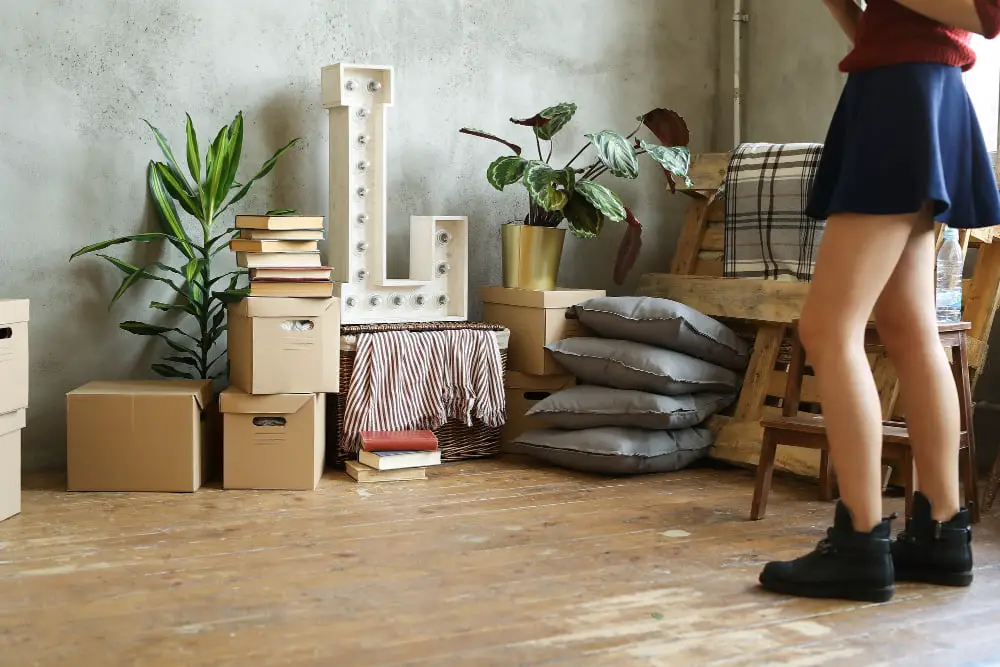
Consider your current living situation, your emotional wellbeing, and the functionality of your home.
Do you often feel overwhelmed by the things around you? Are your belongings creating an obstacle in routine tasks?
Crucially, do you aspire for more mental clarity, less stress and a more organized surrounding?
If you answer affirmatively, embarking on an extreme decluttering journey may be beneficial.
It does require effort, time, and emotional resilience but, when executed effectively, it results in a liberated living space and a calmer state of mind.
Yet, each individual’s needs and thresholds vary.
The key is to strike a balance between personal comfort and simplicity, adjusting the intensity of decluttering to avoid unnecessary stress.
The Philosophy of Less

Embracing the philosophy of less involves not simply minimizing physical possessions, but shifting the focus towards more meaningful, non-material aspects of life. It’s about cultivating an appreciative mindset for what you have and understanding that a surplus of belongings often leads to unnecessary stress.
By reducing clutter, you allow more mental space for what truly matters – relationships, experiences, creativity, and wellness. This mindset can extend to all areas of life, including your schedule, digital spaces, and even relationships, leading to a simpler, more fulfilling life.
How Does Clutter Affect Your Life?

Accumulation of unnecessary items in your living spaces goes beyond just physical disarray; it weighs heavily on your psychological well-being. Research suggests a connection between clutter and increased levels of stress and anxiety.
Too many possessions can overwhelm your senses, making it difficult to focus and process information. Clutter can also foster a perpetually disorganized environment, leading to wasted time searching for items and a reduction in productivity. Moreover, excessive material belongings can become a stumbling block to inviting guests into your home, potentially leading to isolation and decreased social interactions.
Therefore, extreme decluttering benefits both physical spaces and personal well-being.
Steps to Start Extreme Decluttering

Firstly, identify areas of concern within your home. Pay heed to spaces that feel overwhelming, cause stress, or hinder your daily tasks.
Secondly, make a simple decluttering plan. Instead of tackling everything at once, break the process down. Daily or weekly goals often yield better results.
Label items into categories such as keep, donate, sell, or discard.
Next, use proven decluttering methods like the “Four-Box Method” or the “KonMari Method” that fits you best. For instance, the Four-Box Method encourages sorting items into four categories: trash, give away, keep, or relocate, simplifying the decision-making process.
Then, adopt the “One In, One Out” rule. This rule suggests that for every new item brought into the house, an old one must go. It helps keep the clutter in check and reinforces mindful purchasing decisions.
Finally, don’t expect perfection. The aim is to create a living space that feels good and works for you, not to achieve a magazine-worthy home. Remember, progress is more important than perfection in this oft-exhausting endeavor. In the end, extreme decluttering is about building a clutter-free lifestyle that lasts.
Setting Realistic Decluttering Goals
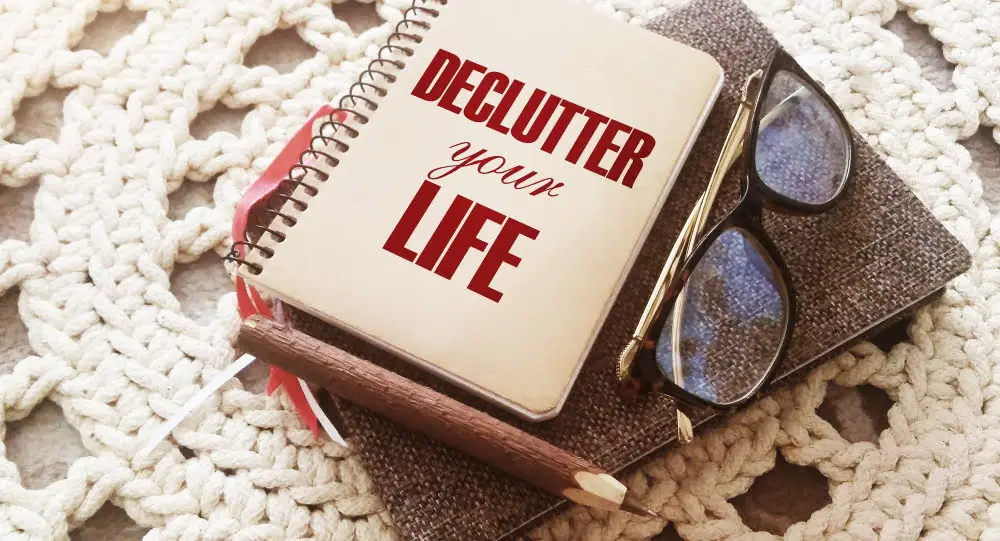
To ensure success, your goals should be specific, measurable, achievable, relevant, and time-bound (S.M.A.R.T.).
Instead of aiming to declutter the entire house in a single day, plan to clear one room or area at a time. Establish a manageable timeline for each task.
For instance, you may dedicate two weekends to sort through and organize the garage or spend an hour a day clearing the home office.
Utilize tools such as checklists or apps for tracking progress and maintaining motivation. Incorporate breaks and reward yourself upon reaching milestones to keep the process enjoyable and sustainable.
Remember, the goal is not perfection, but improvement. Every step you take towards reducing clutter brings you closer to maintaining an organized home.
Decluttering Room By Room

Start with the least intimidating room. By doing this, you’ll gain confidence and motivation for tackling larger projects.
When you enter a room, identify the clutter hotspots. These are areas where items tend to accumulate.
From here, categorize items into different piles such as keep, toss, donate, or relocate.
In the kitchen, pay particular attention to unused appliances, expired pantry items, and redundant kitchenware.
Bedrooms are often inundated with clothes, so evaluate your wardrobe carefully, keeping in mind the “one-year” rule – if you’ve not used it within a year, it’s time to let it go.
Don’t overlook the bathroom, a small but often cluttered space. Expired cosmetics, half-empty products, and unused toiletries can all be realistically assessed and streamlined.
In living spaces, address bookshelves, drawers, and random items like magazines and DVDs. Use storage solutions creatively to maximize space.
Lastly, remember that decluttering is not a quick fix but an ongoing process. Tackle one room at a time, moving at your own pace.
Doing so will make the task less daunting and the success more rewarding.
Extreme Decluttering: The Kitchen

Begin with the counter or island, as these spaces often accumulate miscellaneous items. Arrange cooking utensils, spices, and everyday appliances in designated zones, keeping countertops relatively clear. Consider utilizing vertical spaces, such as the insides of cabinet doors, for additional storage.
Empty every drawer and cupboard. Classify each item into categories: keep, donate, or discard. Be ruthless with duplicates, broken items, or single-use gadgets. If it hasn’t been utilized in the past year and offers no sentimental value, it’s time to let it go.
Once you’ve decided what to keep, assign each item a ‘home’. Think about frequency of use and group related items together. Daily use items should be in easy-to-reach locations, whereas special occasion pieces can be stored in less-accessible areas.
Finally, address the refrigerator and pantry. Dispose of expired products and foodstuff you won’t consume. Group similar products together – dairy and meats, grains and pulses, fruits and veggies – to make meal preparation simpler.
A decluttered kitchen leads to streamlined meal preparation, and a sense of serenity while cooking. Plus, it’s easier to keep clean! Remember, simplicity and functionality are goals here. This process can be challenging, but the results are undeniably rewarding.
Extreme Decluttering: The Bedroom
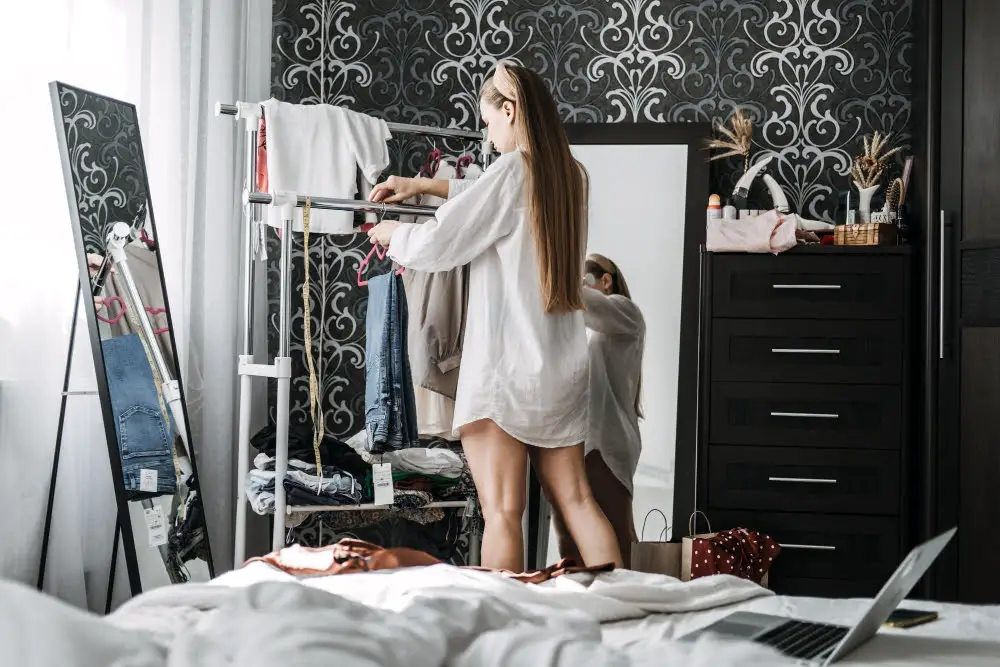
Start by removing everything from the closets and drawers. Sort these items into four categories: keep, donate, sell, or discard. The ‘keep’ pile should only include essential items and those that truly bring you joy or have a specific purpose.
Next, sift through the countless items that typically accumulate on nightstands and dressers. Remember, clear surfaces often result in a clear mind.
Under the bed often becomes a neglected storage space for items rarely used. If possible, avoid using under the bed for storage to keep your bedroom clutter-free. If it’s essential for storage, opt for organized containers that neatly store items, preventing them from collecting dust.
Address the linen situation next. Most households have more bed linens than necessary. A good rule of thumb is to have two sets per bed – one on the bed and one in the laundry. The rest can be discarded, donated, or repurposed.
Lastly, manage the clutter ‘hot spots,’ such as the top of a dresser or a chair that accumulates clothing. Regularly clearing these areas will help maintain your decluttered bedroom over the long term.
Extreme Decluttering: The Living Room
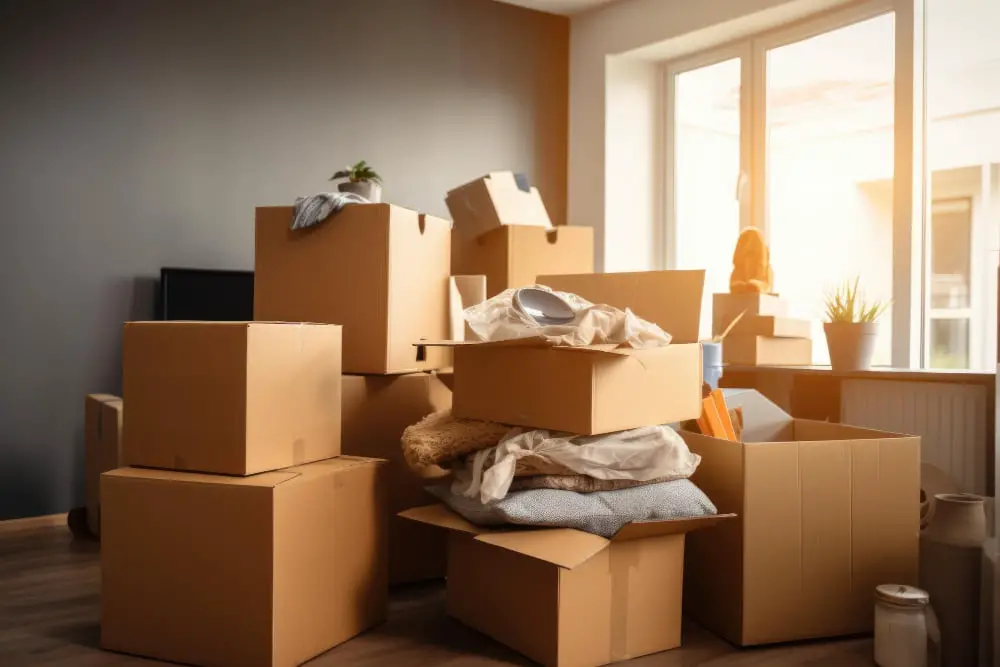
Begin the process by dividing the room into sections, such as the couch area, entertainment center, bookshelves, and coffee table. Following the ‘one at a time’ rule dramatically improves concentration and prevents overwhelm.
Carefully review items, considering their usefulness, and sentimental value. Discard duplicates, broken items, and anything not used in the past year. Aim for functionality and minimalism.
Reorganize remaining objects, each designated its space. Practicality is crucial here; items frequently used should be easily accessible.
Consider sustainable disposal avenues for discarded items, such as reselling platforms or donation centers.
An integral part of extreme decluttering is resisting the temptation to refill the cleared spaces. Avoid impulse buys, sticking to ‘need-based’ purchases. Tactics like these help maintain a clutter-free, serene living room long after the extreme decluttering process.
Extreme Decluttering: The Bathroom
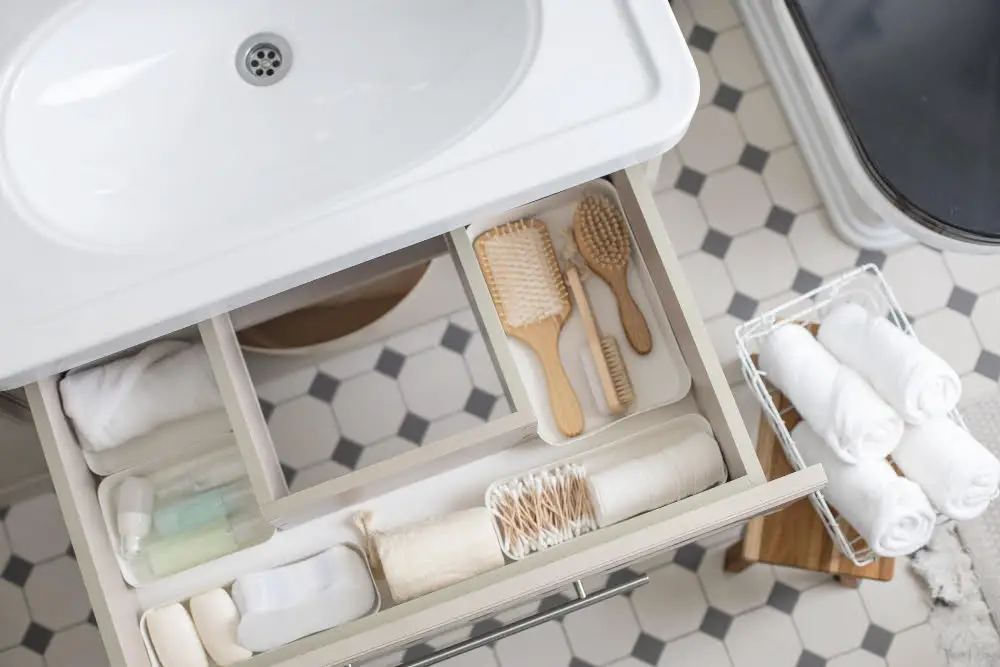
Start by systematically removing everything from your cabinets, countertops, and shower shelves. It’s crucial to have a clear view of all items to effectively assess their usefulness.
Expired skincare products, medications, and half-used toiletry items from five years ago can take up unnecessary space. Dispose of these responsibly, considering recycling options where possible.
Be mindful when deciding what to keep. The ever-so-common “I might use this someday” mindset often leads to clutter. If a product hasn’t been used for several months, it’s probably out of your regular routine and doesn’t deserve valuable cabinet real estate.
Sort your essentials into categories such as hygiene, beauty, medicines, and cleaning supplies. Buy compartmental organizers or use small boxes to store similar items together. This will help maintain order and minimize future clutter. Additionally, ensure frequently used products are easily accessible.
Remember, the goal is not to transform your bathroom into a showroom but to enhance its functionality, making it an easy-to-navigate, pleasant space. Minimalism is a tool, not the end goal. Reevaluate and adjust as needed over time, because effective decluttering is a continuous process, not a one-off task.
Decluttering Your Digital Space

To start, apply the same principles used in physical decluttering to your digital environment. Begin by assessing the extent of digital clutter present; this could be in your email inbox, desktop files, smartphone apps, and other digital spaces.
Emails can pile up quickly and contribute to a chaotic virtual environment. Prioritize clearing your inbox by deleting spam, unsubscribing from unhelpful newsletters, and categorizing important emails for future reference.
Next, take control of your files and handle them systematically. Create clear and logical categories on your computer to store related files together and make use of cloud-based storage for back-ups. Regularly set time aside to discard unnecessary files, duplicates, or outdated documents and keep your digital workspace streamlined.
Similarly, consider simplifying your smartphone’s apps. Evaluate what apps are essential and which aren’t used or simply distract you. Deleting rarely used apps will free up storage space and make navigation easier.
Last but not least, remember to manage your social media presence. Limit your follow list to only meaningful, relevant, and uplifting content. Regularly update privacy settings and review your online presence for any unnecessary digital footprints.
Form the habit of regularly decluttering and organizing your digital space, just as you would your physical environment. This process not only enhances your productivity but also reduces stress, leading to a better online experience. Following these steps can ultimately help to make your digital life more manageable and enjoyable.
Tips for Decluttering Clothes

Begin by gathering every piece of clothing you own in one location; this way, you’ll have a clear overview of your current wardrobe. When evaluating each item, consider its condition, style, and frequency of use.
Clothes that are damaged, outdated, or haven’t been worn in the last year are usually good candidates for removal.
Next, establish three categories: keep, donate, or discard. Choose to keep items of clothing that you love, wear regularly, and make you feel good. Donate clothes that are still in good condition but you no longer need, and discard any items that are beyond repair or wear.
Try implementing the one-in, one-out rule for maintaining your newly decluttered wardrobe. This rule suggests that for every new piece of clothing you buy, you should remove an old one. This technique not only helps control the quantity of clothing you have but also encourages thoughtful purchasing habits.
Implementing these strategies can drastically reduce wardrobe clutter and leave you with a curated collection of clothes that align with your style and needs.
Techniques for Decluttering Books
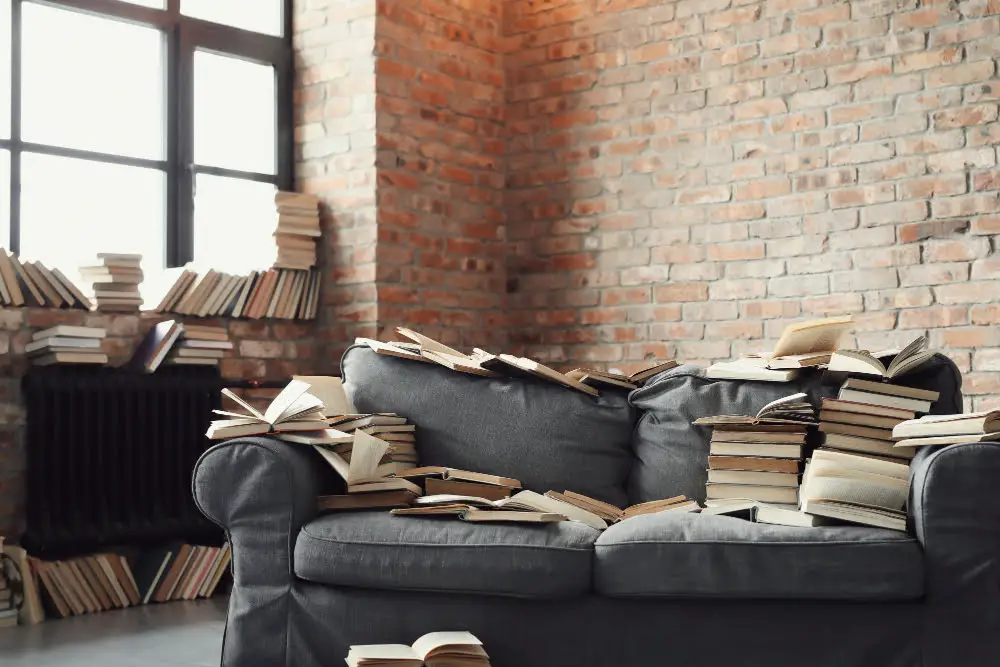
Start by assembling every book in your home into one area to fully comprehend the volume of your collection. Then, sort them into categories such as ‘Read’, ‘To Be Read’, ‘Favourites’, and ‘Unwanted’. Consider each book’s worth – does it bring joy, have sentimental value, or will you re-read it? If not, it may be time to part ways.
Instead of discarding, try reselling books online through platforms like eBay, Amazon, or Decluttr. Alternatively, donate to local libraries, schools, or charities. For rare or antique books, contact a specialist dealer.
For the remaining books, consider a system of organization – you might opt for alphabetical, by genre, or by colour. Commit to a ‘one-in, one-out’ principle moving forward to prevent clutter from reaccumulating. Employ e-books and library services to keep physical accumulation to a minimum.
Discarding Sentimental Items

Sentimental items often pose significant hurdles to decluttering. Attachment to these objects stems from memories or emotions they evoke, making the decision to part ways difficult. However, keeping a clear objective helps in such tricky scenarios.
Firstly, assess your storage capacity; any item that doesn’t fit reasonably should be a candidate for removal.
Next, consider digitizing items where possible. Convert photos, letters, and artwork to electronic form, saving space physically while preserving the sentimental essence.
Lasty, adopt the ‘one in, one out’ rule. When a new sentimental item enters your space, let an old one go. It’s also helpful to set a specific limit on these items to guarantee that they won’t overrun your home.
Decluttering sentimental items may be emotionally challenging, but it’s a vital step towards an organized living environment. It allows the truly meaningful items to take center stage, and offers a refreshing viewpoint on what truly ‘matters’.
Overcoming Obstacles in Extreme Decluttering

It’s common to encounter hurdles during this process. Emotions often rise to the surface, hampering progress.
To uproot these obstacles, adopt a systematic approach. First, acknowledge that attachment to items can obstruct progress. These could be sentimental pieces or perceived future necessities.
Accepting that not all items hold equal importance is the first step in overcoming this barrier.
Secondly, watch out for decluttering fatigue. It’s natural to feel exhausted amidst a large-scale purge.
When this happens, don’t push too hard; instead, schedule short, manageable decluttering sessions.
Thirdly, don’t succumb to the ‘might come in handy’ mentality. This is a common trap that clings you to clutter. Use the one-year rule. If you haven’t used it in the past year, it’s time to let it go.
Last but not least, resist the temptation to fill newly decluttered spaces. Remind yourself that open space doesn’t necessarily demand filling.
These strategies can help you conquer common decluttering challenges and stay committed to your extreme decluttering goals.
How to Handle Decluttering Fatigue

Combatting the weariness that often accompanies massive decluttering projects is key to maintaining momentum and progress. First, break the process down into manageable tasks. Rather than focusing on an entire room, start with a single drawer or shelf.
Secondly, take regular breaks. Giving yourself adequate rest ensures that you remain energized and mentally focused. Pace yourself and avoid rushing, make it a thoughtful and gradual process.
Thirdly, celebrate your accomplishments, no matter how small they might seem. Each item you discard is a step closer to a clutter-free home. Finally, remind yourself of the long-term rewards of decluttering; transforming your space into an organized, serene environment can provide immense psychological benefits. By adopting these strategies, decluttering fatigue can be mitigated, making the process more enjoyable and productive.
Balancing Minimalism and Necessity
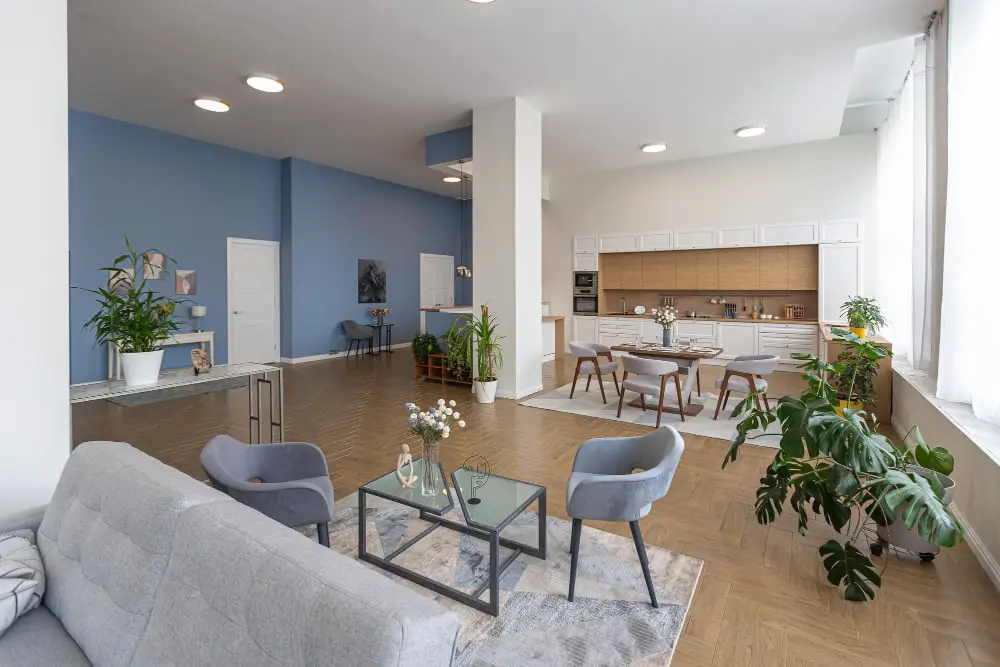
To maintain a functional living space while adhering to decluttering principles, it’s crucial to understand the fine line between embracing minimalism and retaining necessary items. Items should not only serve a purpose but add value to your life. Evaluate each object, ask yourself if it’s essential or if you use it regularly.
For infrequently used items that provide distinct utility—like holiday decorations or camping equipment—consider centralized storage solutions. Keep them tucked away until you need them. On the other hand, those items that don’t serve a meaningful purpose or aren’t used often enough to justify their space may be candidates for removal.
Remember, minimalism isn’t intrinsic deprivation; it’s purposeful ownership. It’s about having fewer things to make room for more experiences, productivity, and peace of mind. Critically evaluate your belongings and keep only what genuinely enriches your life. This thoughtful approach makes it easier to balance minimalist ideals with practical needs.
An organized home that operates smoothly with a minimal number of items ensures a life with maximum efficiency and tranquility. Balancing minimalism and necessity doesn’t entail living a Spartan existence but rather molding a lifestyle that’s unburdened by unnecessary items.
Making Decluttering a Habit

Developing a habitual routine for decluttering ensures that the process becomes less overwhelming over time and your living space remains in a state of order.
Start by establishing a decluttering schedule that suits your lifestyle, whether that be daily, weekly, or monthly. This could involve dedicating 15 minutes a day to decluttering a specific area or setting aside a few hours each week for a more extensive clean-up.
Keep your decluttering efforts consistent by incorporating them into your existing routines. For example, make a practice of evaluating any item before it enters your home, and immediately disposing of things that are no longer useful or meaningful to you.
Another tactic could be the ‘One in, One out’ rule, where for every new item that comes into your home, one item must leave.
Finally, make the decluttering process enjoyable. Listen to your favorite podcast, audiobook, or music as you work. This not only makes the task more pleasant but it also gives you something to look forward to.
The key to making decluttering a habit is to start small, stay consistent, and make it enjoyable.
Soon, you’ll find that a clutter-free environment is not just a one-time event, but an integral part of your lifestyle.
Ethical Ways to Dispose of Clutter
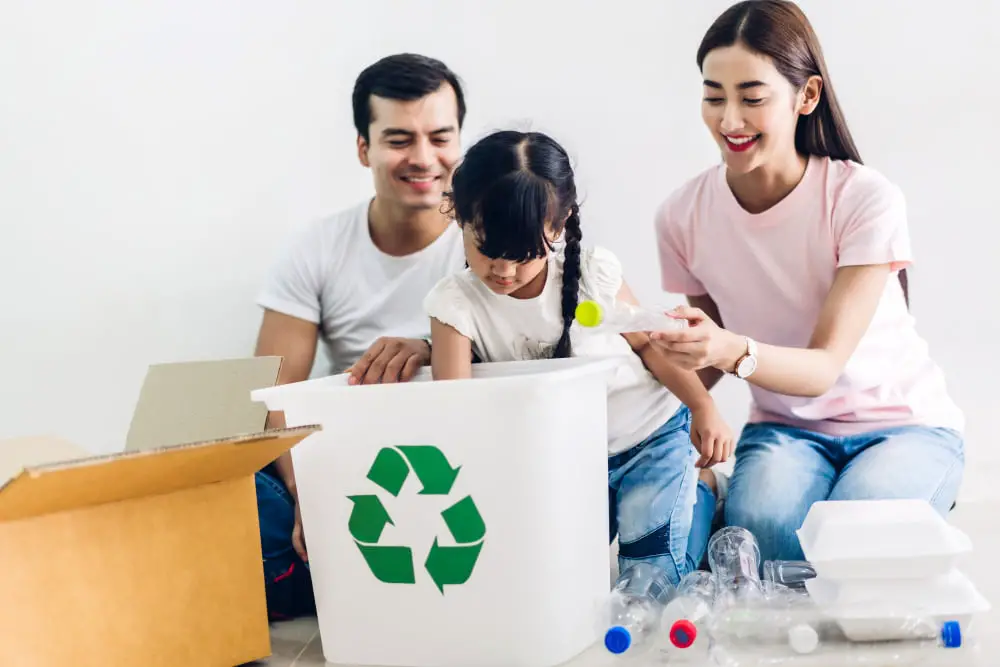
An environmentally-friendly approach to discarding clutter involves three main methods: recycling, donating, and selling. In terms of recycling, check your local guidelines to ascertain which materials are recyclable. Items such as paper, plastic, glass, and metal are often suitable for recycling bins.
Donating is another viable way of reusing unwanted items. There are numerous charities, thrift stores, and shelters that would welcome gently-used clothes, furniture, and other household items. Additionally, schools and community centers could benefit from your unwanted books and craft supplies.
Lastly, consider selling items in good condition via online marketplaces like eBay, or at garage sales. This not only could provide you with extra funds but also extends the life cycle of your items, reducing waste. Always remember, one man’s clutter could be another man’s treasure.
Donating Selling Unwanted Items

With the items you no longer use or need separated, your next step involves finding these possessions a new home. Donation proves effective for items still in good condition but unnecessary for your lifestyle. Numerous charitable organizations accept various items, ranging from clothing to furniture, and donating to these charities can make a major impact.
On the other hand, selling offers an excellent opportunity to recoup some expenses, particularly for high-value items, such as designer clothing, electronics or vintage pieces. Online platforms, including eBay, Craigslist, and Facebook Marketplace, provide convenient platforms to reach potential buyers. Remember to price your items reasonably and be open to negotiations to facilitate quick and easy sales.
Whether you choose to donate or sell, the goal is to ensure these items no longer contribute to unnecessary clutter in your home. By re-homing these items, you contribute positively to your community and environment while embracing your decluttering journey.
Evaluating Your Decluttering Progress

In order to ensure your efforts are paying off, it’s essential to regularly assess your progress. Start by reviewing the decluttering goals you set at the onset and observe the changes in the concerned spaces. If rooms are becoming easier to navigate, and daily tasks are more efficient, consider these as positive indicators.
Take photos before and after each decluttering session. This visual documentation provides concrete proof of your accomplishments and can serve as a motivational tool during challenging times.
Moreover, listen to your emotions. A sense of relief, improved focus, and less stress are intangible yet significant signs of progress. Lastly, take note of family and friends’ reactions; their positive comments can reinforce your determination to keep a clutter-free home.
Remember, extreme decluttering is a journey rather than a one-time event. Be patient. It takes time to see substantial changes, but each step you take brings you closer to a serene, orderly home.
Maintaining a Decluttered Space
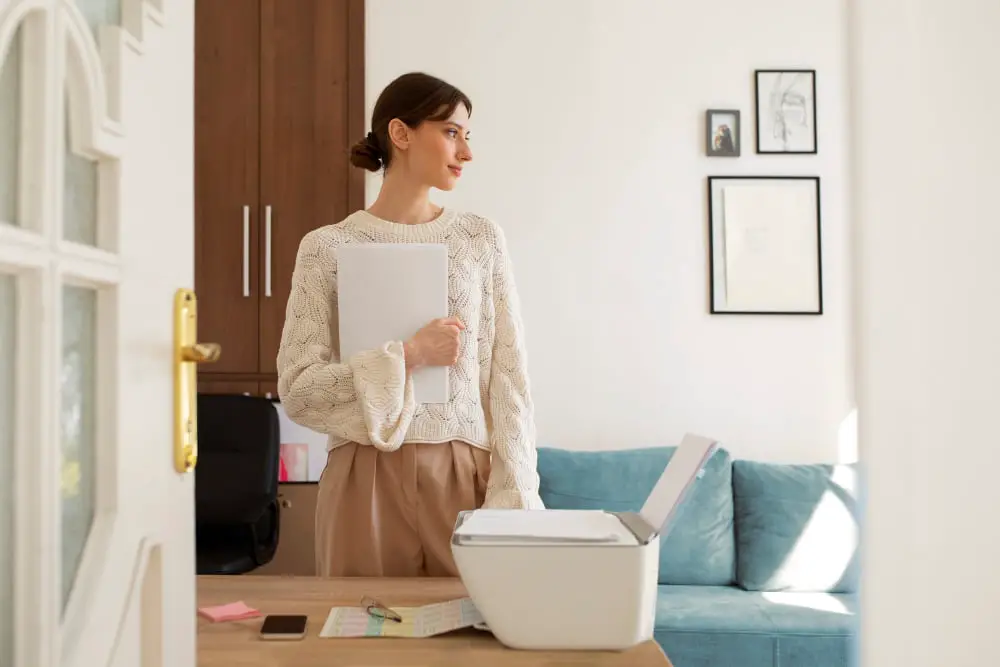
Regular routines are crucial in ensuring the hard work of decluttering doesn’t go to waste. Develop a habit of reassessing and reorganizing weekly to prevent the accumulation of clutter. If a new item comes into your space, make a conscious effort to find it a specific home, and ensure it has more significance than something you are willing to part with. This ‘one in, one out’ rule helps balance your possessions, keeping clutter at bay.
Always remain vigilant about what enters your living space. From mail to grocery items, everything should have an allocated place. When something is not in use, return it to its designated spot immediately. This practice not only keeps your home tidy but makes it easy to locate your belongings when you need them.
Finally, keep in mind that decluttering is a practice, not a project. It is an ongoing process, not a one-time event. Regularly reassess your space and your need for the items in it. This continuous cycle of reassessment and cleanup assures that your living quarters remain unhindered by excess and offer a soothing, organized environment.
Psychological Benefits of Extreme Decluttering

One scientifically supported advantage of decluttering is its impact on stress levels. Living in a cluttered environment can induce anxiety and cause feelings of being overwhelmed. By decluttering, you systematically eliminate these stress triggers, resulting in a calmer frame of mind.
Moreover, the act of decluttering in itself can have therapeutic properties. The process of sorting, categorizing, and organizing around you can help regain control, aiding in alleviating feelings of anxiety.
Improved focus is another psychological benefit linked to having a well-organized space. A cluttered environment can be a constant source of distraction. By removing these distractions, you considerably enhance your ability to concentrate, benefiting both work and personal life.
Another profound effect of decluttering is the boost to your self-confidence. The completion of such a demanding task brings a sense of achievement, reinforcing self-esteem. Plus, being the master of your environment comes with a sense of empowerment.
To sum up, the psychological benefits of extreme decluttering – lower stress levels, improved focus, and increased self-confidence – demonstrate that the practice extends beyond improving your physical space. Decluttering could potentially be a powerful tool towards leading a balanced and fulfilling life.
How Decluttering Transforms Your Home

Take a moment and envisage a home where every item has its place – streamlined surfaces, airy rooms, and organized cabinets. The transformation from a cluttered space to an orderly haven enhances not just the physical appearance, but also goes great lengths towards improving your home’s functionality.
As you declutter, you free up precious space, giving you more room to move, breathe, and enjoy your surroundings.
Further, a decluttered home can remarkably reduce time spent searching for misplaced items and tidying up, offering you more time for productive or relaxing activities. The change also reduces stress, as visual chaos can often lead to mental disarray.
With fewer things to distract your senses, you will likely find concentration easier, making your home an ideal place for focused work or study.
Last but not least, decluttering could inspire new decor ideas, enabling you to reimagine and personalize your area in ways you might not have previously considered.
Hence, the transformation goes beyond tidiness and organization; it paves the way for an enhanced lifestyle suffused with productivity, tranquility, and personal expression.
Living With Less: Stories of Success
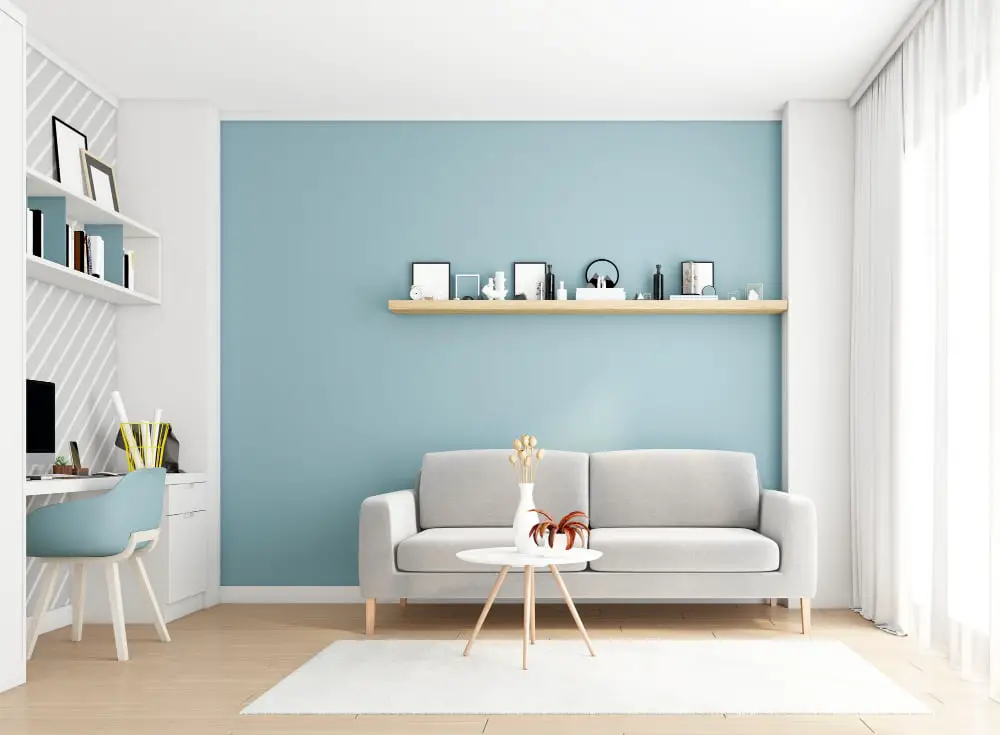
Navigating the world with fewer possessions has brought manifold benefits to numerous individuals. Patrick Rhone, a Minneapolis-based author, emphasises that eliminating unnecessary items has enabled him to focus on what truly matters.
His cleaner setting has resulted in enhanced creativity and productivity, changing his overall lifestyle.
Marie Kondo, renowned organizing consultant, operates on the principle of keeping only items that spark joy, shaping her surroundings, and those of her many clients, with an aura of positivity.
Josh Becker, the founder of Becoming Minimalist, recounts how his decluttered living environment fostered well-being for his entire family, resulting in more meaningful interactions and quality time.
These individuals have adopted the idea of “less is more”, demonstrating that a leaner lifestyle can be an avenue to richer experiences.
The Impact of Decluttering On Family and Relationships

When personal belongings become shared clutter, it naturally affects family dynamics and interpersonal relationships. As belongings clear out, the friction often seen over misplaced items subsides. A decluttered house fosters a harmonious coexistence, with each family member having adequate personal space.
Also, the process of decluttering collectively strengthens familial bonds. It provides an opportunity for open communication about shared and individual belongings, which might otherwise be a source of contention. Decluttering tasks can be turned into family activities, spurring teamwork. This cooperative effort opens up avenues for shared decision-making and instills a sense of collective responsibility.
In practical terms, less clutter translates into less time spent cleaning and tidying, which means families have more quality time together. Thus, a minimalistic living approach nurtures more meaningful and positive relationships.
Bear in mind that like any change, decluttering may initially bring tensions, particularly when different family members have differing attachment levels to belongings. It’s essential to navigate these differences with understanding and compromise, easy decluttering rules can help (e.g. if it’s not used within a certain period, it goes).
To sum up, decluttering not only transforms physical surroundings, but it also positively impacts interpersonal ties, contributing to a more peaceful and pleasant living environment.
FAQ
What is the 20 rule decluttering?
The 20/20 decluttering rule suggests that an item can be discarded if it can be replaced for less than $20 in less than 20 minutes.
How do you aggressively declutter your house?
To aggressively declutter your house, begin with smaller areas to swiftly see progress, gradually working your way from a drawer to a cabinet, then another, until every room is systematically organized, remembering that each step taken is one towards a clutter-free home.
What is an intense desire to declutter?
An intense desire to declutter is often referred to as compulsive decluttering or obsessive compulsive spartanism, characterized by an excessive urge to remove objects from your home and living areas.
What is the KonMari method in decluttering?
The KonMari method is a decluttering technique, developed by Marie Kondo, that encourages you to keep only items that spark joy in your life while discarding the rest with gratitude.
What are the key psychological benefits of aggressive decluttering?
Aggressive decluttering enhances mental clarity, reduces stress, boosts productivity, and cultivates a sense of accomplishment.
How does extreme decluttering impact one’s lifestyle and efficiency at home?
Extreme decluttering significantly impacts one’s lifestyle and home efficiency by boosting productivity, reducing stress, enabling easier management of belongings, and fostering a clearer, more focused mind.




